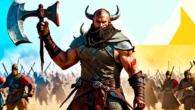
Who stands to gain from NFTs

Non-Fungible Tokens (NFTs): Who Stands to Gain and Benefits & Risks
Non-Fungible Tokens (NFTs) are digital assets that have taken over the art world and now they’re being adopted in other industries such as gaming and finance. NFTs have unique digital identities that can be used to represent ownership and authenticity of digital assets such as artwork, music, videos, and even collectibles like sports cards or domain names.
Who Stands to Gain from NFTs?
1. Creators:
NFTs have opened up a new revenue stream for artists and creators. They can now sell their digital assets as NFTs and monetize them directly without the need for intermediaries like galleries or record labels. This allows artists to retain full ownership of their work and control over its distribution and pricing.
2. Investors:
NFTs have also become a popular investment asset class for collectors and investors. They can buy and sell NFTs on online marketplaces and store them in digital wallets like MetaMask or Coinbase Wallet. This allows investors to diversify their portfolio and invest in unique digital assets that appreciate in value over time.
3. Consumers:
NFTs have also created new opportunities for consumers to own and collect digital assets that they value. They can buy and sell NFTs on online marketplaces and display them in their virtual world or use them as avatars in games or social media platforms.
Benefits of NFTs:
- Authenticity: NFTs provide a digital certificate of authenticity for each asset, which makes it impossible to replicate or counterfeit the asset. This is particularly important for rare and valuable items such as artwork, collectibles, and sports memorabilia.
- Ownership: NFTs allow creators and owners to retain full ownership of their digital assets, giving them control over distribution, pricing, and revenue sharing. This can be particularly attractive to artists who have been struggling with the traditional art world model, where they often receive only a small fraction of the sales proceeds.
- Fractional Ownership: NFTs allow for fractional ownership of digital assets, which means that multiple investors can buy and sell a single asset without having to transfer ownership. This can be particularly attractive for collectors who want to invest in rare and valuable items but may not have the financial resources to purchase them outright.
- Royalties: NFTs provide a new way for creators to earn royalties on their digital assets. They can set a percentage of the sales proceeds as a royalty, which means that they will receive a portion of the revenue generated from each sale of their NFT.
Risks of NFTs:
- Market Volatility: The value of NFTs is highly dependent on market demand and supply. This can lead to significant price fluctuations and high levels of risk for investors.
- Regulatory Risk: NFTs are still a relatively new technology, and there is a risk that governments may try to regulate them as securities or commodities. This could limit their use and adoption and create uncertainty for creators, investors, and consumers alike.
- Environmental Impact: NFTs require significant computational power to run on blockchain networks, which can have a negative impact on the environment. The energy required to mine cryptocurrencies, which is used to create NFTs, has been linked to climate change. This can create ethical concerns for creators and investors who are conscious of their environmental impact.
Case Studies:
1. NBA Top Shot: NBA Top Shot is a platform that allows fans to buy and sell NFTs representing moments from the NBA. It has been hugely successful, with over $2.5 billion worth of NFTs sold in 2021 alone. This platform has provided new revenue streams for the NBA and its teams, as well as collectors and investors who are passionate about basketball.
2. CryptoKitties: CryptoKitties is a platform that allows users to breed and sell NFTs representing cats with unique digital identities. It was one of the first successful NFT platforms and has since been acquired by OpenSea, which is now one of the largest NFT marketplaces. CryptoKitties has provided new revenue streams for creators and investors, as well as a fun and engaging way for users to collect and breed unique digital assets.
Conclusion:
NFTs are a powerful technology that has opened up new revenue streams for artists, collectors, and investors alike. They provide authenticity, ownership, fractional ownership, and new opportunities for royalties and revenue sharing. However, NFTs also come with risks such as market volatility, regulatory risk, and environmental impact. As the technology continues to evolve, it will be important for creators, investors, and consumers to understand these benefits and risks and use them wisely.







